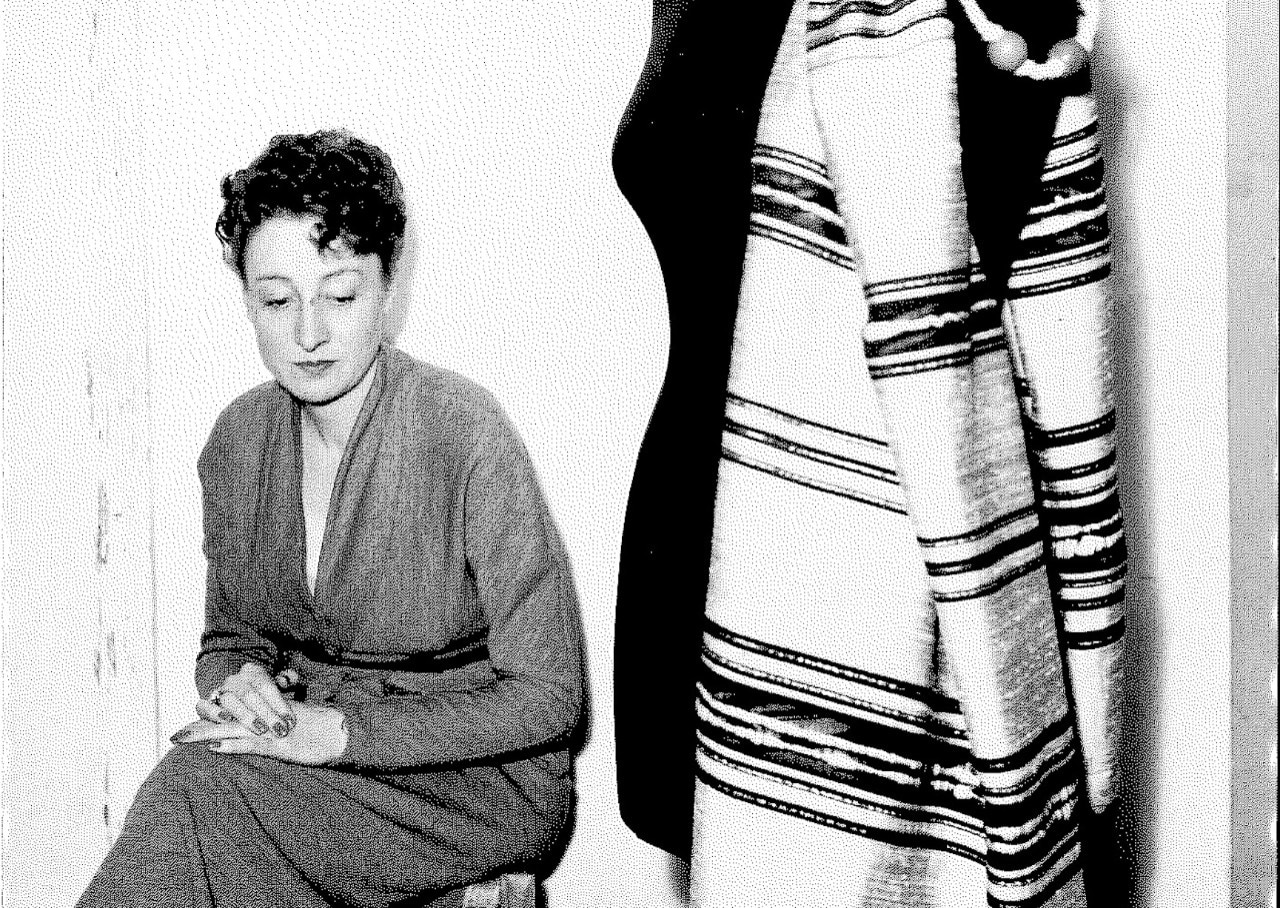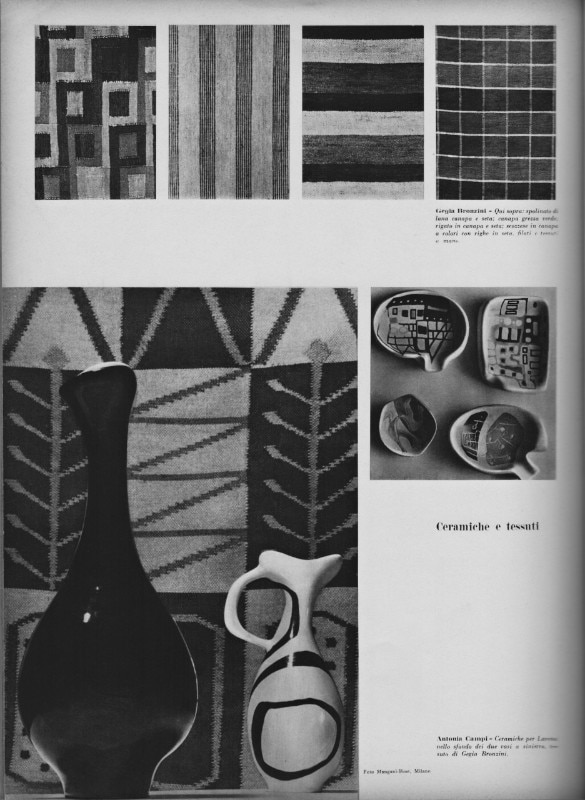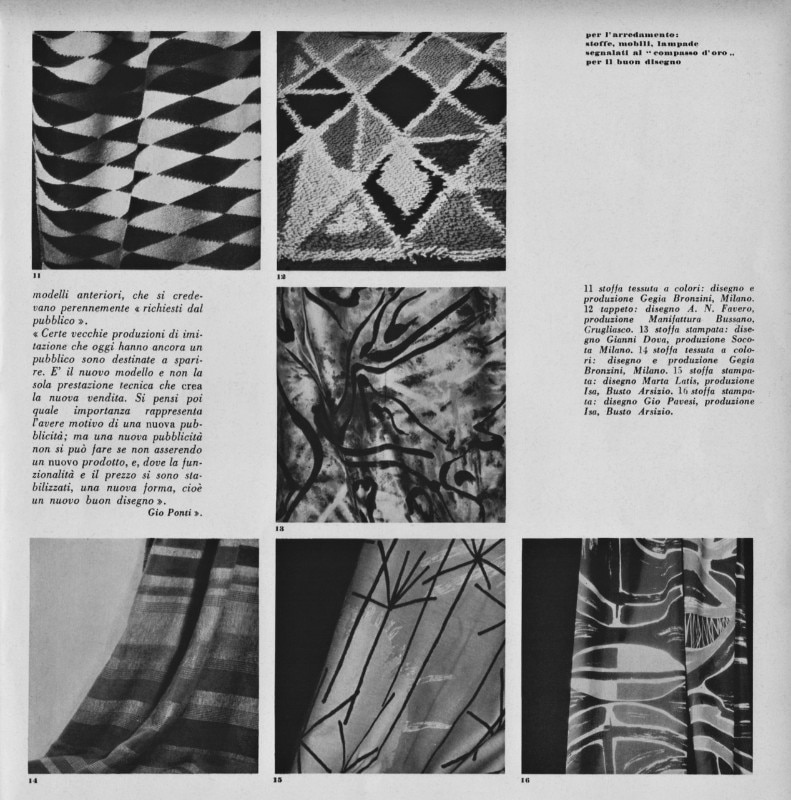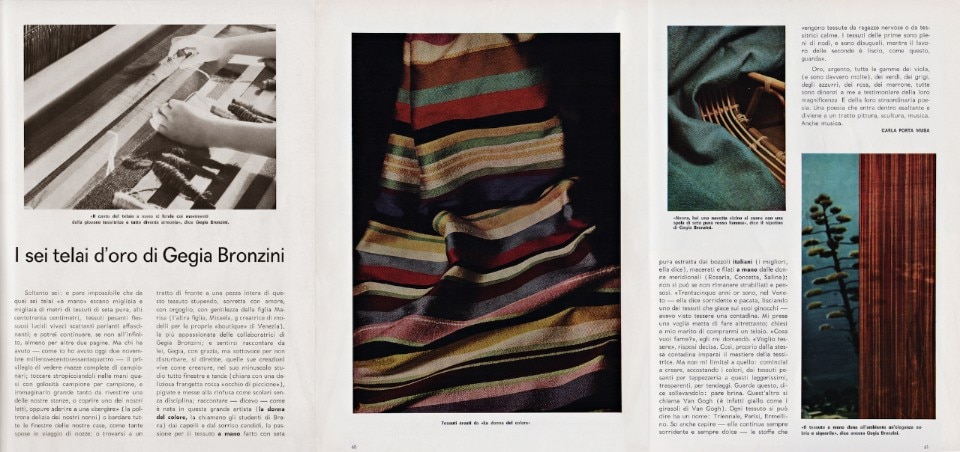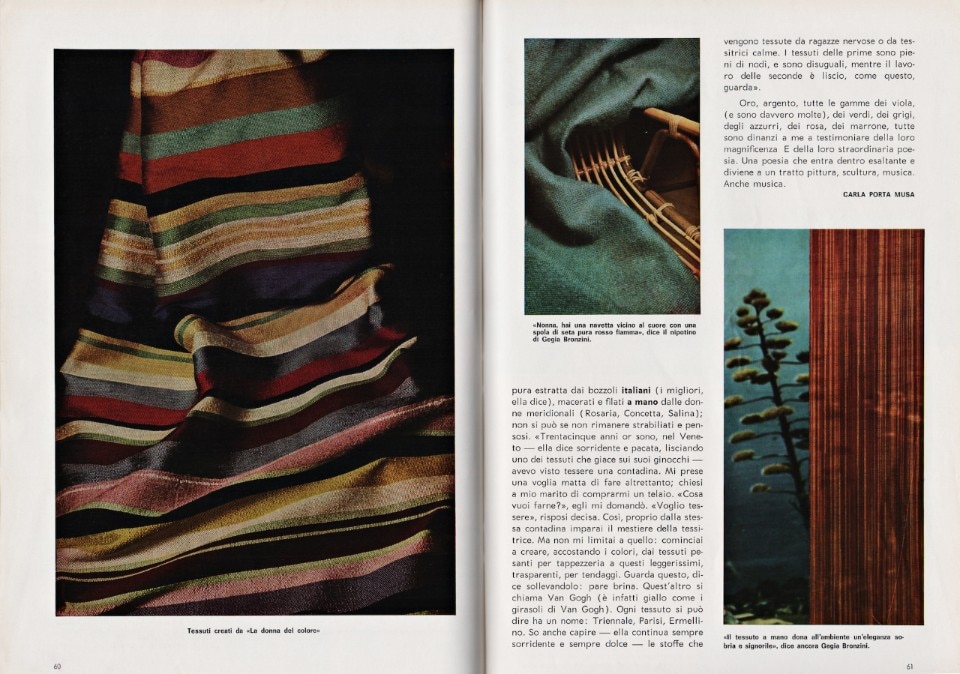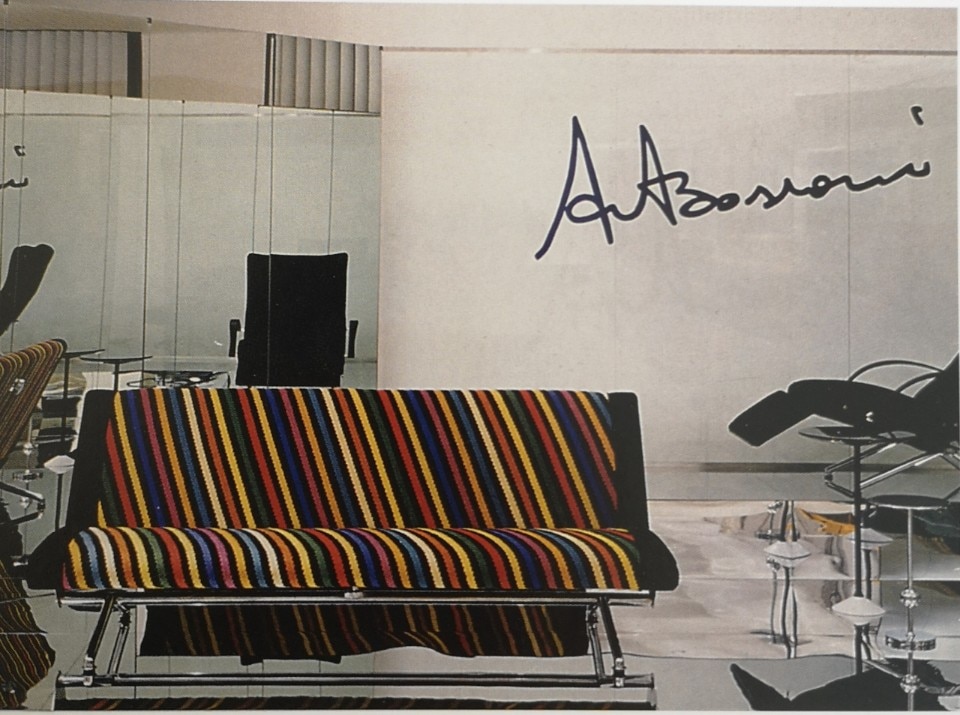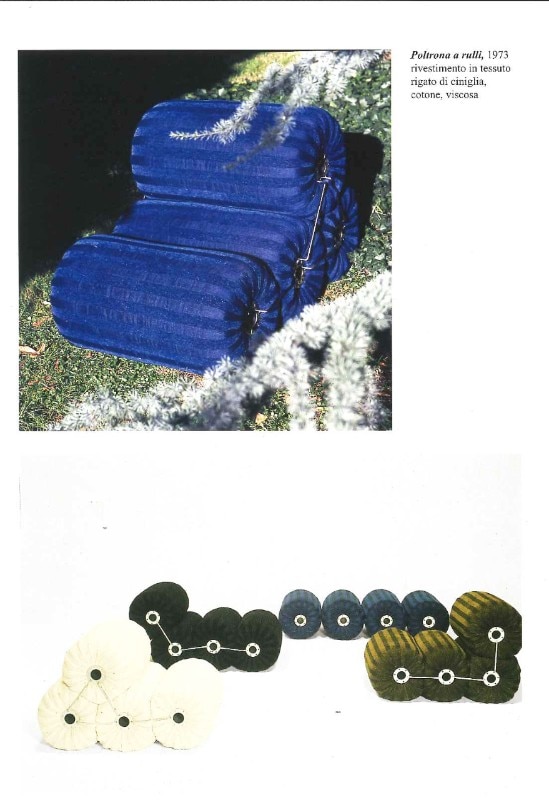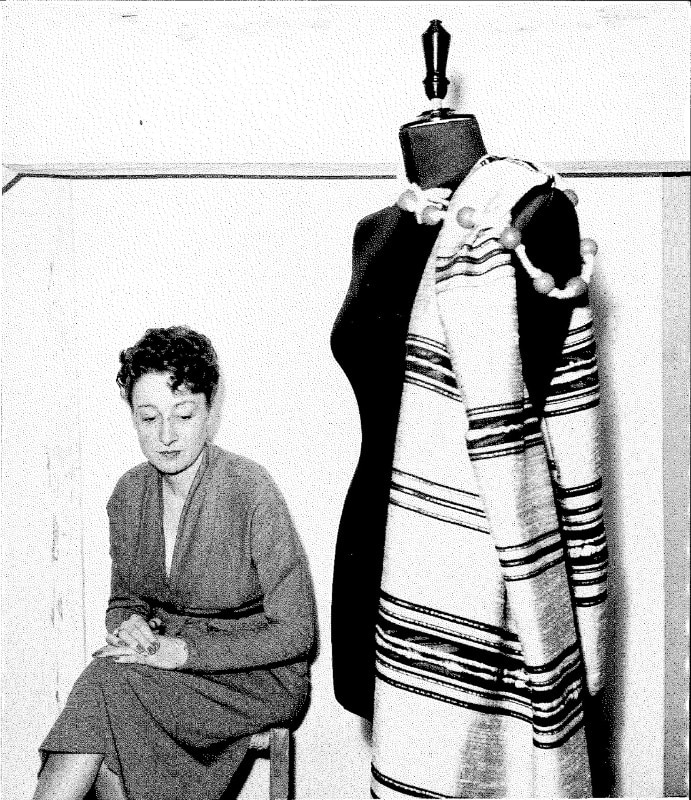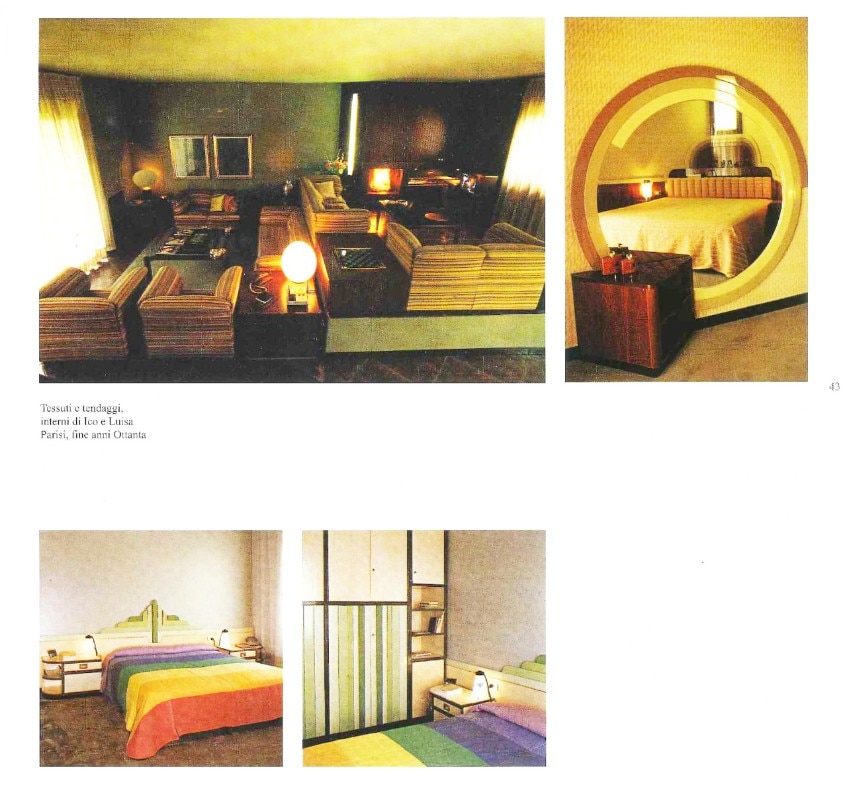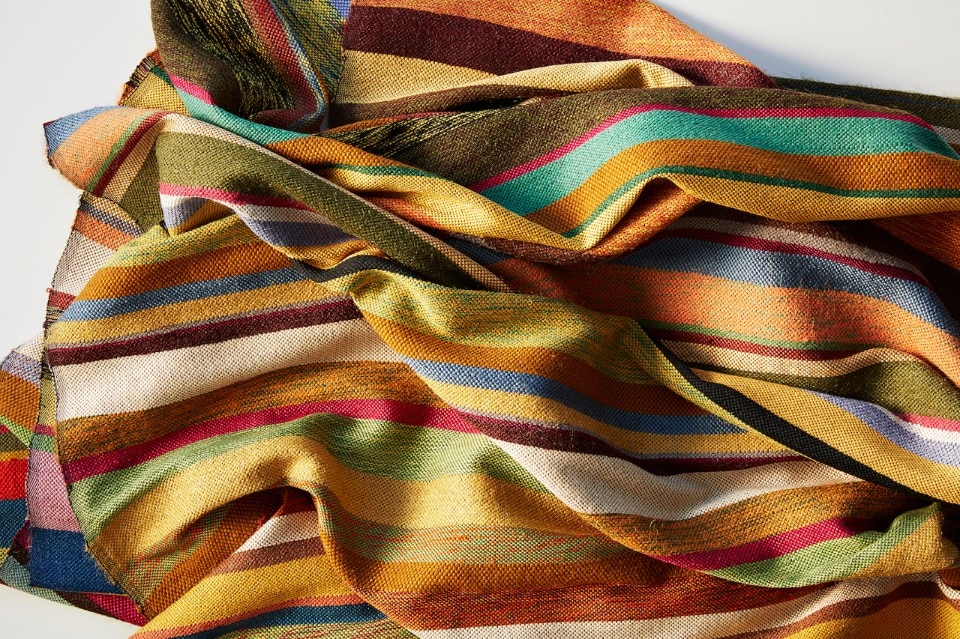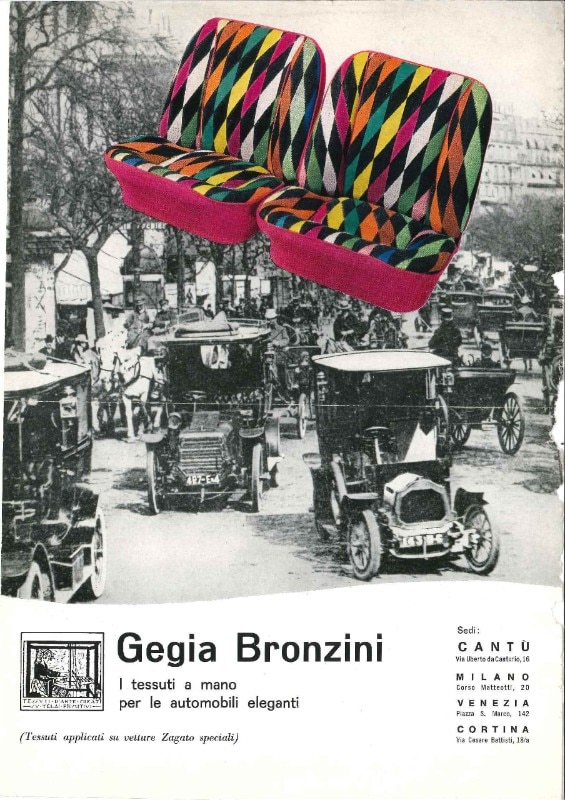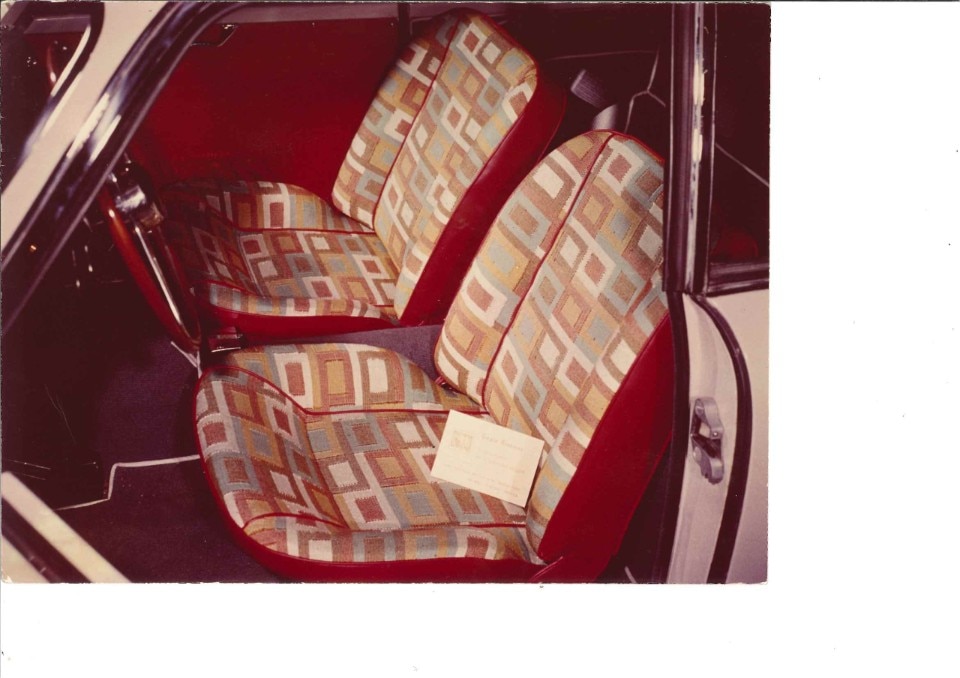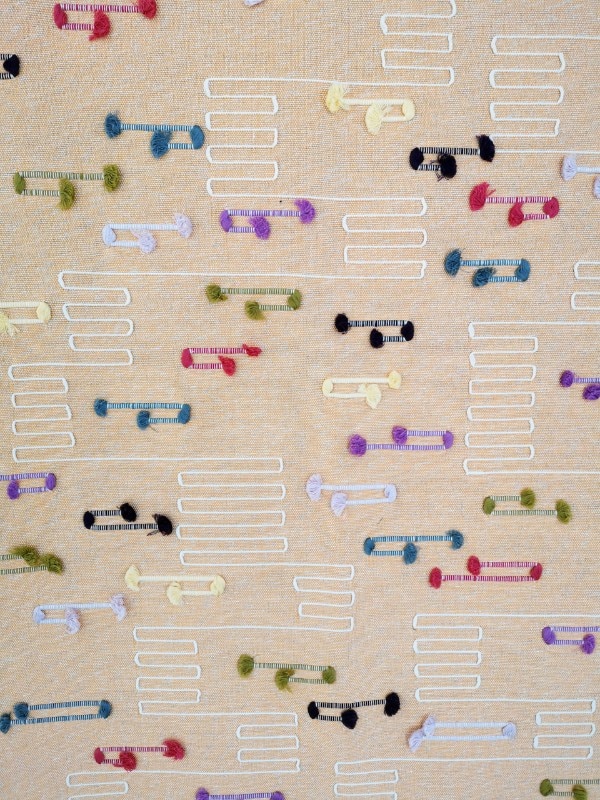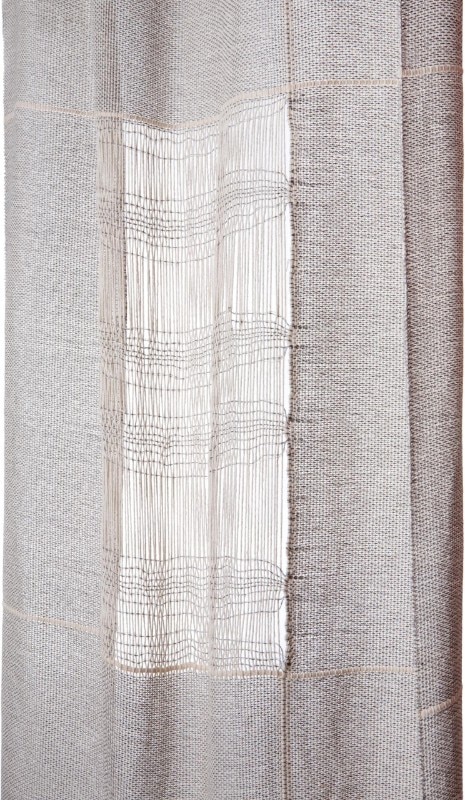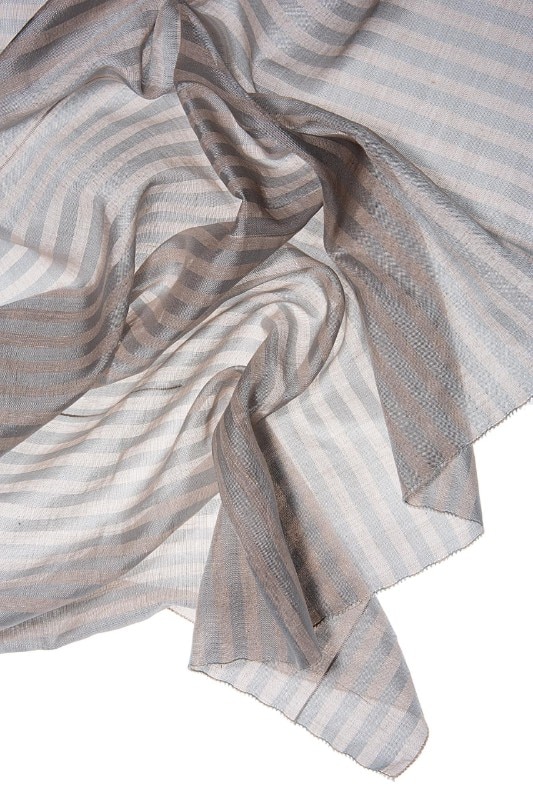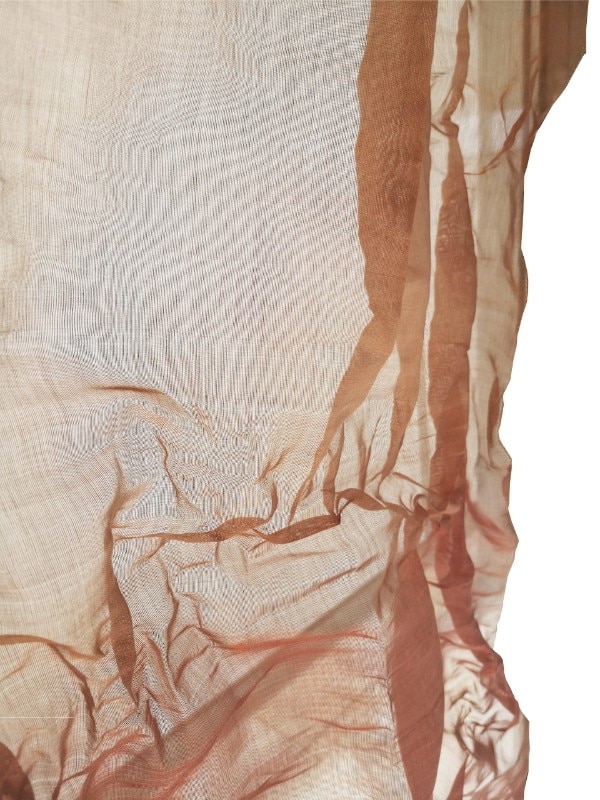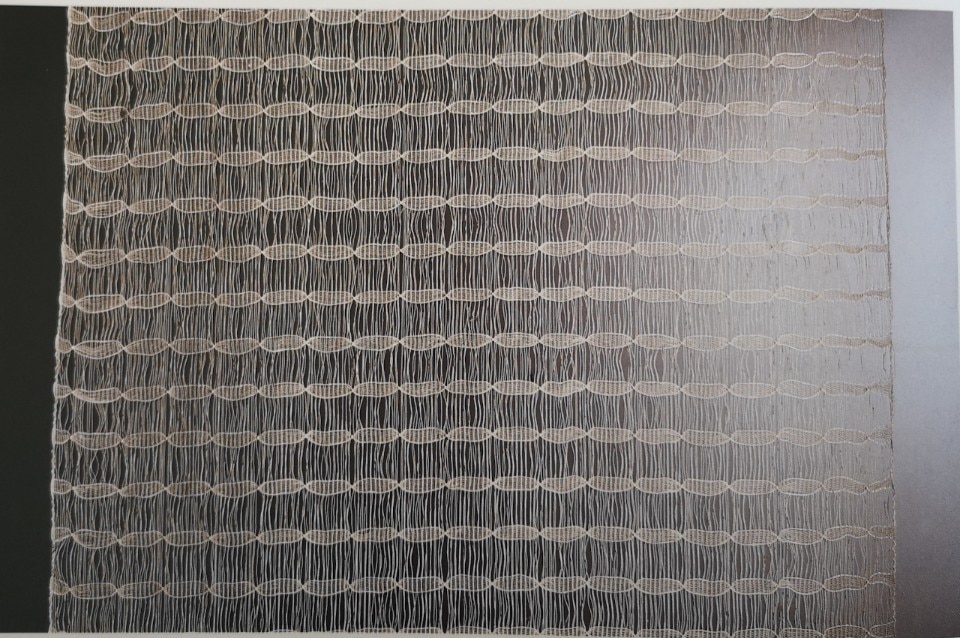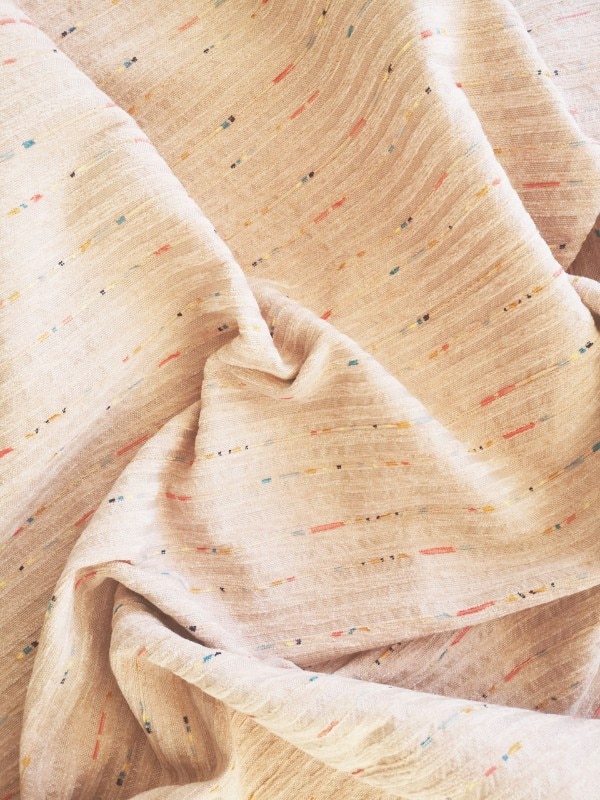“Don’t tell me about the mechanical looms because I can’t really stand them! They are so fragile and hard that I can't even set my foot in the room where there is one of them. And then they make such dull, flat, irrelevant fabrics! Ah, no no, I wouldn’t give up our dear hand looms for all the gold in the world!”
(Gegia Bronzini, 1961)
A typically feminine know-how culture characterises an essential period of Italian design between the 1930s and 1970s: a silent line of great manual skill that accompanied the research and the experimentation among the arts. We are talking about the world of textiles, so dear to Gio Ponti that he dedicated a column to it in Domus and an entire issue on the magazine, Stile (n.11, 1941), which featured a number of women who played a role as craftsmen/artists, most of whom are still unknown to the most, such as Renata Bonfanti, Anita Pittoni, Gegia Bronzini and Carla Badiali.
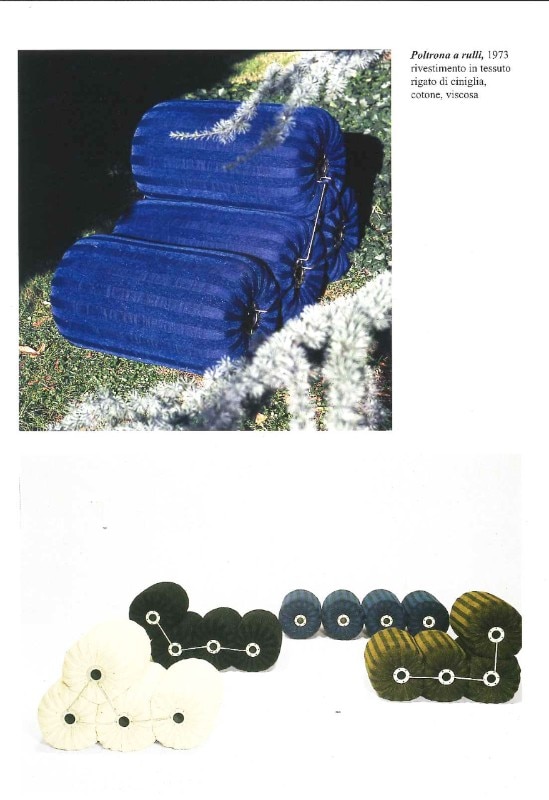
Gegia Bronzini was born in Milan and moved to Veneto at the beginning of the Thirties to follow her husband, an agronomist called to manage an important estate (Villa Papadopoli sul Terraglio, today Villa Fustemberg). Fascinated by the work of the local female farmers she bought a loom and learned how to use it. She is immediately joined by her daughters Marisa – also renowned for her textile works – and Michela, and she sets up a free course for the rural community women in Marocco (Veneto), which she transforms, as a natural continuation, into a production laboratory until she assumes her creative identity. Gegia Bronzini’s research has always supported the ancient technique of primitive spolinato, which consisted in passing by hand through some sections of the warp, the weft threads, thus defining the decoration. Her par excellence instrument is the two-heddle hand loom, with which is possible to make one type of fabric only: the canvas. “Don’t tell me about the mechanical looms because I can’t really stand them!” she would declare in an interview on Casa Novità magazine in July 1961.
A typically feminine know-how culture characterises an essential period of Italian design between the 1930s and 1970s: a silent line of great manual skill that accompanied the research and the experimentation among the arts
The use of unusual materials such as broom and corn wrappers, together with natural yarns (linen, silk, wool) represents a second aspect of her research. The fabrics prefer a link with abstract and geometric figures, in line with the Bauhaus textile laboratory production. Each woven panel is unique and is the result of a great executive ability, passion and creativity. The applications concern every home textile aspect: from surfaces to furniture, from the table to the bed. The curtains represent a substantial part of Bronzini’s production because they combine the experimentation of materials, from hemp thread to silk yarn to the use of copper, and the drawing, with real openings that allow different but always modulated light passages.
In 1946 the laboratory moved to Cantù. This move allowed Gegia Bronzini to get into the heart of the artisan research in the field of furniture that was characterizing the area in those years. Collaborations were born with numerous architects that she supported in the interior design for the definition of fabrics such as Carlo Lucci, Ico and Luisa Parisi and Osvaldo Borsani. With the latter she designed the upholstery for the P70 sofa (1954, Produzione Tecno), a diagonal striped fabric in different colours in silk, viscose and cotton, made with the primitive spolinato technique. She studies various fabrics exclusively for Saporiti Italia, including Sapo 82, characterised by a striped pattern where a multicoloured ribbon alternates with chenille and cotton parts. Among the most original commissions, the Zagato body shop’s request for the upholstery of the seats and mats for the Flavia Sport, Flaminia and Osca cars stands out. The fabrics stick out for the geometric language and the combination of different colours; qualities that give a real movement, eliminating the two-dimensional aspect from the panel.
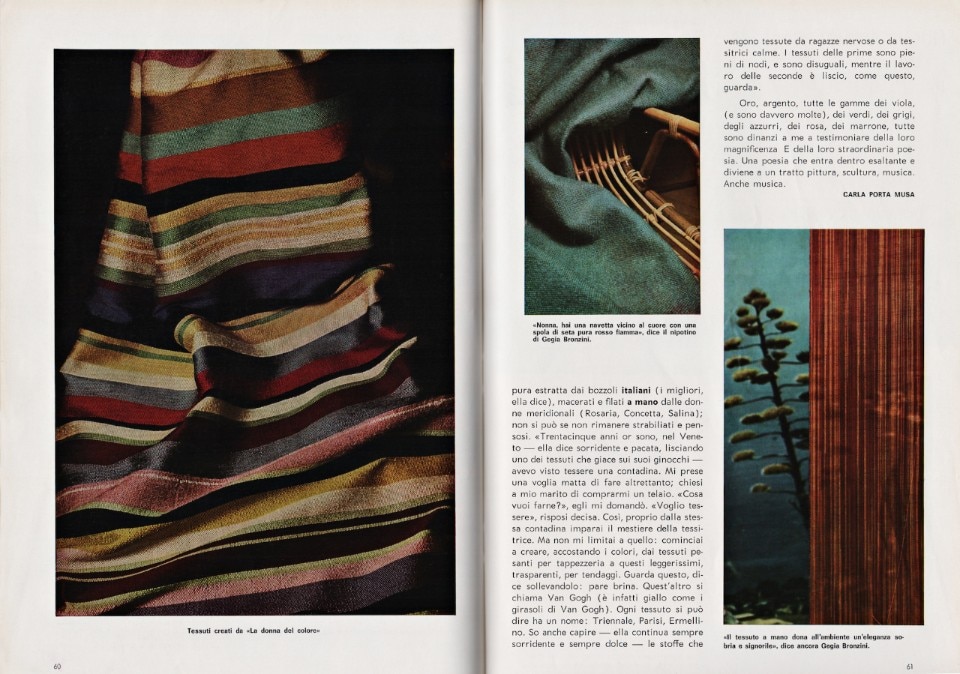
Since 1935 there has been a series of exhibitions and awards that have become her sounding board: a solo exhibition in the Loggetta del Sansovino in Venice, the Textile Exhibition in Rome where she won three awards, an International Crafts Exhibition in Berlin, the Venice Biennial and numerous other participations in the Milan Triennials and, last but not least, the nomination to three Golden Compasses. The awards also come from the international field thanks to the participation in the exhibition “Italy at Work. Her Reinessance in Design Today” hels at the Brooklyn Museum, New York, in 1950. The success of the first Venetian exhibition ends with the opening of the Antiqua Ars Nova shop in St. Mark’s Square. The name recalls the ancient art of the primitive spolinato. From Venice her work first spread to Milan with the opening of a shop in Galleria del Toro in 1939 and, immediately after the war, she opened another shop in Cortina.
After Gegia Bronzini’s death in Venice in 1976, the activity is carried on by her daughter Marisa in the Carimate headquarters, reinventing herself without stopping until 2007. Today Gegia Bronzini lives again in the spaces of the company that housed the silverware Lino Sabattini’s laboratory (today Gegia Bronzini is a registered trademark of Tessile Officina, Bregnano, Como). Wooden looms are still the fundamental part of an exclusive production of fabrics that tell of a distant knowledge heritage that are transformed into objects of refined contemporary style.


